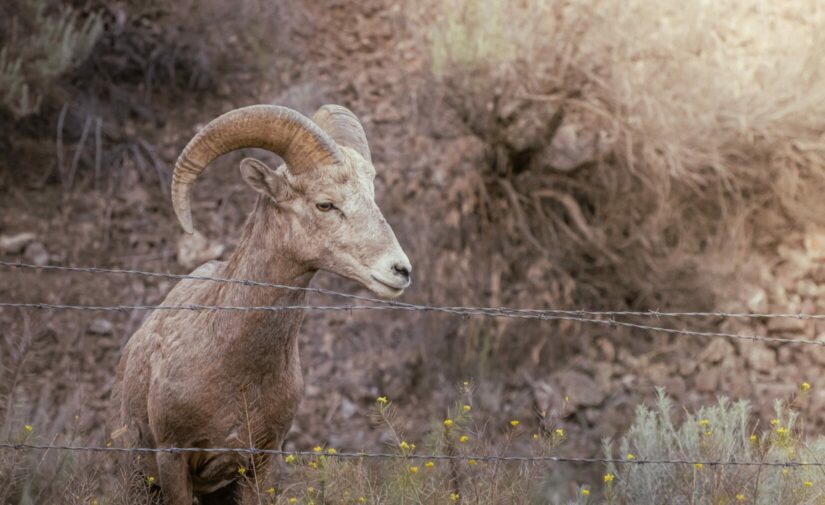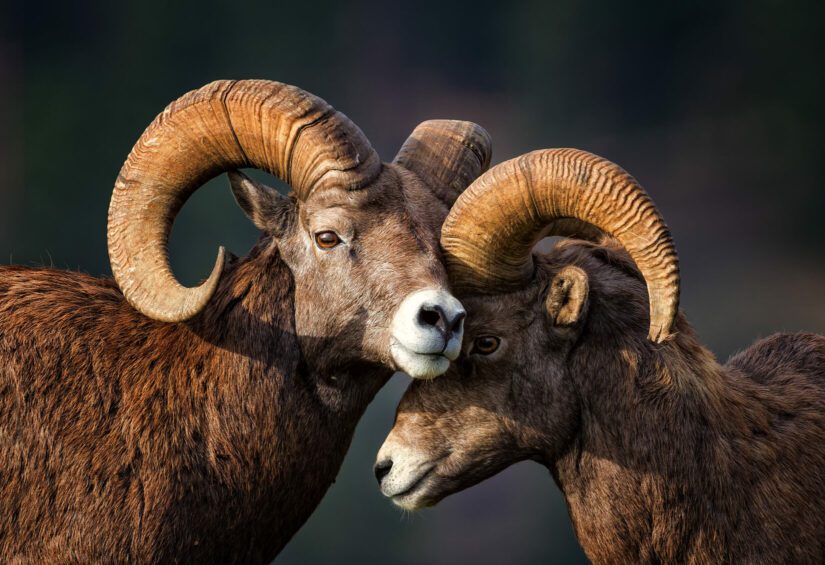The welfare of farmed and wild animals is connected in many ways. Just as some diseases can jump between animals and people, diseases can also move between farmed and wild animals. In B.C., our wild and domestic sheep populations are fighting a battle against a deadly pathogen, known as M. ovi.

What is M. ovi?
Mycoplasma ovipneumoniae (M. ovi) is a bacteria commonly found in the nasal cavity and sinuses of domestic sheep and goats. Domestic sheep have evolved resistance and rarely show symptoms of infection, but can transmit M. ovi to wild sheep. Transmission to bighorn sheep in particular has devastating consequences, causing infected sheep to die from pneumonia.
How do wild sheep become infected?
Interactions between domestic and wild sheep can occur throughout the year. Where wild sheep ranges overlap with domestic sheep pastures, it’s not uncommon for these animals to intermingle. Wild sheep may interact with domestic sheep at fence lines, or even jump fences. Wild sheep may even share the same forage and water sources as domestic sheep on the farm. Unfortunately, interactions with infected domestic sheep can have deadly consequences.

Domestic sheep carrying M. ovi transmit the bacteria to wild sheep primarily through nose-to-nose contact. Since it takes time to become sick, the infected (but visibly healthy) wild sheep will return to their herd and spread the disease, resulting in major die offs that can kill entire herds.
The wild ewes (mature females) that survive initial infection may develop long-term infections and pass the disease to their young. Infected lambs can spread the disease to all their lamb friends in the herd. Lambs will often die before two months of age due to their weak immunity.
What is the issue?
For many years, wild sheep populations have experienced rapid population declines as a result of M. ovi being transmitted from domestic to wild animals. With low lamb survival rates, populations have been unable to recover.

What is being done to save wild sheep populations?
Preventing transmission from domestic sheep to wild sheep from occurring is the most important way to protect wild sheep. Much work is being done to manage the disease that is already circulating in wild sheep populations to reduce spread and improve lamb survival rates.
Veterinarians, biologists, farmers, and volunteers have come together to fight this deadly infectious disease threatening both wild and domestic sheep. They’re doing what they can to stop the spread into wild sheep populations and find a treatment for domestic sheep.
Transmission is a recently released documentary that highlights the work being done to save our sheep.
Graphic content warning: this film contains scenes that may be upsetting to some viewers (e.g., necropsy, humane euthanasia), viewer discretion is advised.

